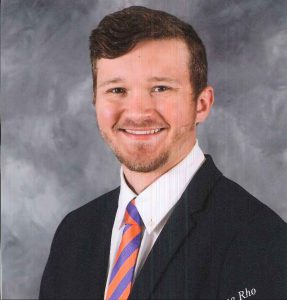
My Background
My name is Sean M., and I was born and raised in coastal SE Florida. I am currently a senior at the University of Florida studying Forest Resources and Conservation with a specialization in Protected Areas Management. I was informed in November of 2021 that I received a slot for the University of Florida Institute of Food and Agricultural Sciences Extension Internship for the 2022 Summer. I chose to intern in St. Lucie County because I have previous knowledge and experience working with landscaping. My summer internship will be under the mentorship of UF/IFAS Extension St. Lucie County extension agents Ken Gioeli (Natural Resources & Environment) and Kate Rotindo (Urban Horticulture). As part of my time in St. Lucie County, I learned about sea vegetables at Harbor Branch Oceanographic.
During my summer internship in St. Lucie County, I will be shadowing scientists at various organizations. My first shadowing experience was with Dr. Carey Minteer and her team conducting research on biological control of invasive earleaf acacia at the UF/IFAS Indian River Research and Education Center. My next internship shadowing experience was learning about how Florida Atlantic University at Harbor Branch Oceanographic Institute is using native sea vegetables for both human consumption and coastal restoration.
What Did I Do?
On Thursday, May 19, 2022, I welcomed the opportunity to travel to Ft. Pierce, Florida to visit Harbor Branch Oceanographic Institute | Florida Atlantic University. Harbor Branch is operated by Florida Atlantic University. For over 50 years, Harbor Branch has been working diligently to better understand marine ecosystems and how we as humans play a role in ocean conservation. The workshop I participated in primarily focused on sea vegetables, hydroponics, and how they are demonstrating how to grow four species of sea vegetables that could all have commercial value. In addition to sea vegetables, FAU has started to raise native Florida fish species such as red drum, Sciaenops ocellatus, and cobia Rachycentron canadum, but they are currently housing Florida Pompano Trachinotus carolinus. These fish are integral for aquaculture because their biological fluids and fecal matter have important minerals that plants require including Nitrogen (N) and phosphorus (P). The process is called Integrated Multi-Trophic Aquaculture (IMTA) and has several complex parts, piping, and machinery all working cohesively.
The four species of sea vegetables that are being produced at Harbor Branch are sea asparagus (Salicornia bigelovii), sea purslane (Sesuvium portulacastrum), saltwort (Batis maritima), and sea blite (Suaeda linearis), (Jill Sunderland, 2022). The unique aspect of these four sea vegetables is that each of them is edible. Some of the recipes that these sea vegetables can be used in include salads, edible garnishes on appetizers, soups, and countless other options. While these are tasty vegetables, they still have salt in them and could be used as a substitute for normal granulated salt. In addition to adding some necessary salt to your diet, these plants offer other health benefits. The nutritional benefits include carbohydrates, proteins, fats, vitamins, and minerals.
Another benefit of these salty treats is the benefits to the ecosystem. One of the ways to do this is to plant living shorelines. These shorelines can be defined as, “an alternative to sea walls and bulkheads, employing natural materials such as oyster shells, sand, mangroves, salt marsh plants, and other organic materials,” (Reynolds et al., 2021). Some of the benefits include water quality improvement, erosion control, and natural habitat for several coastal wildlife species.
There are three ways to grow these sea vegetables in your backyards including containerized with sand, containerized with clay, and a hydronic system known as an NFT, Nutrient Film Technique (Davis, et al., 2022). The best method of growing these plants is by planting them in a container with sand that can be purchased from any hardware store. For sea asparagus, the best way to grow them is from seeds, while the other three species performed better when a cutting was placed into the container to germinate. One of the experiments that are being conducted showed the vegetables having an extremely prominent level of growth at week 7 across all three planting techniques.
Conserving our coastlines with native species is one of the best ways to reduce erosion, promote biodiversity, and enhance water quality. The outstanding work that the researchers are doing at Harbor Branch Oceanographic Institute will allow for improved coastlines across the Southeastern coast of Florida.



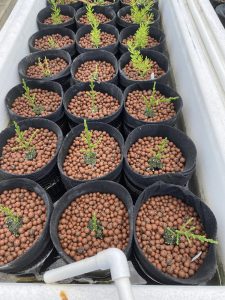
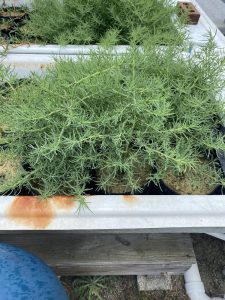
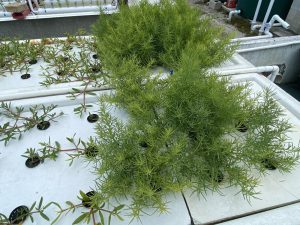
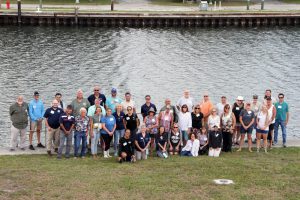
Thank you
A special “thank you” to all the researchers and presenters at FAU | Harbor Branch Oceanographic Institute for their amazing workshop. A special shout out to Dr. Megan Davis for the opportunity to get involved.
Works Cited
Davis, Megan, et al. “How to Grow Sea Vegetables (Germination, Seedlings, Planting).” Sea Vegetable Workshop. Sea Vegetable Workshop, 19 May 2022, Ft. Pierce, Harbor Branch Oceanographic Institute | Florida Atlantic University.
Reynolds, Laura K., et al. “Living Shoreline Monitoring – How Do I Evaluate the Environmental Benefits of My Living Shoreline?” UF|IFAS Extension, University of Florida, 10 Jan. 2021, https://edis.ifas.ufl.edu/.
Sunderland, J. (2022, May 19). Agenda: Sea Vegetable Workshop. Ft. Pierce; Florida Atlantic University.
Additional Links
Harbor Branch Oceanographic Institute | Florida Atlantic University
Harbor Branch Oceanographic Institute | Florida Atlantic University (fau.edu)
My Intern Experience Blogs
Summer Internship Shadowing Scientists Through the UF/IFAS Extension St. Lucie County
 0
0
